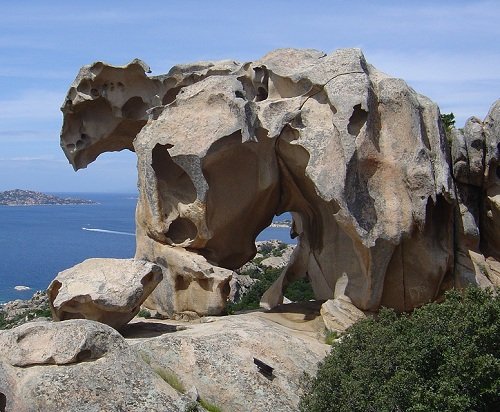What is Weathering of Rocks

Weathering is the name given to the process responsible for wear, tear and breakdown of rocks, minerals and soils due to the effects of the earth’s atmosphere and ecology. Unlike erosion, which also plays a similar role, weathering does not involve any active agents like water, air or snow to carry out the wear and tear. Weathering itself is divided into two categories, mechanical and chemical.
Mechanical weathering is said to occur due to physical conditions like temperature, pressure and the presence of water and ice. Chemical weathering on the other hand, relies on chemicals in the atmosphere or those biologically produced by life forms.
The process of weathering is largely responsible for the presence of soils, which vary according to the rocks or minerals that contribute to them.
Instructions
-
1
Mechanical Weathering
Mechanical or Physical weathering generally relies on thermal, frost and pressure actions but sometimes also includes some kind of chemical change.
Thermal: Thermal action is mostly seen in deserts, where temperatures reach extremes during day and night. The repeated fluctuation of temperature shocks the outer layers of rocks, resulting in them breaking or peeling off.
Frost: Mainly occurring in regions with moisture and extremely low temperatures, Frost action depends on the formation of ice and its expansion. Moisture and water can seep into small pores or cracks in rocks and expand upon freezing, weakening the rock’s structure. This in time can result in the rock breaking into smaller pieces.
Pressure: Pressure is a potent weathering agent and works in two main ways. Some rocks, like igneous rocks, are formed deep under the earth’s crust, which puts them under extreme pressure. However, when the top layers are eroded, the pressure is released, causing these rocks to break on the surface.
Moreover, when water, usually in seas and oceans, hits the rocks on the shore with pressure, it traps air inside the pores and cracks. This compressed air then bursts out with a lot of force when the water retreats, causing the rock to break. -
2
Chemical Weathering
Carbonation: Acid rain, which is formed when rain water mixes with gases in the air, like CO2 and SO2, can lead to the dissolution of rocks in time, causing them to break into smaller parts.
Oxidation: This process involves the change of the iron composition of rocks after coming into contact with oxygen and water. The effect, which is commonly known as ‘rusting’, weakens the rocks and causes them to crumble.
Biological: Different plants and microorganisms also release chemicals which can weaken rock composition. Examples of Biological weathering include the action of moss and lichens.







